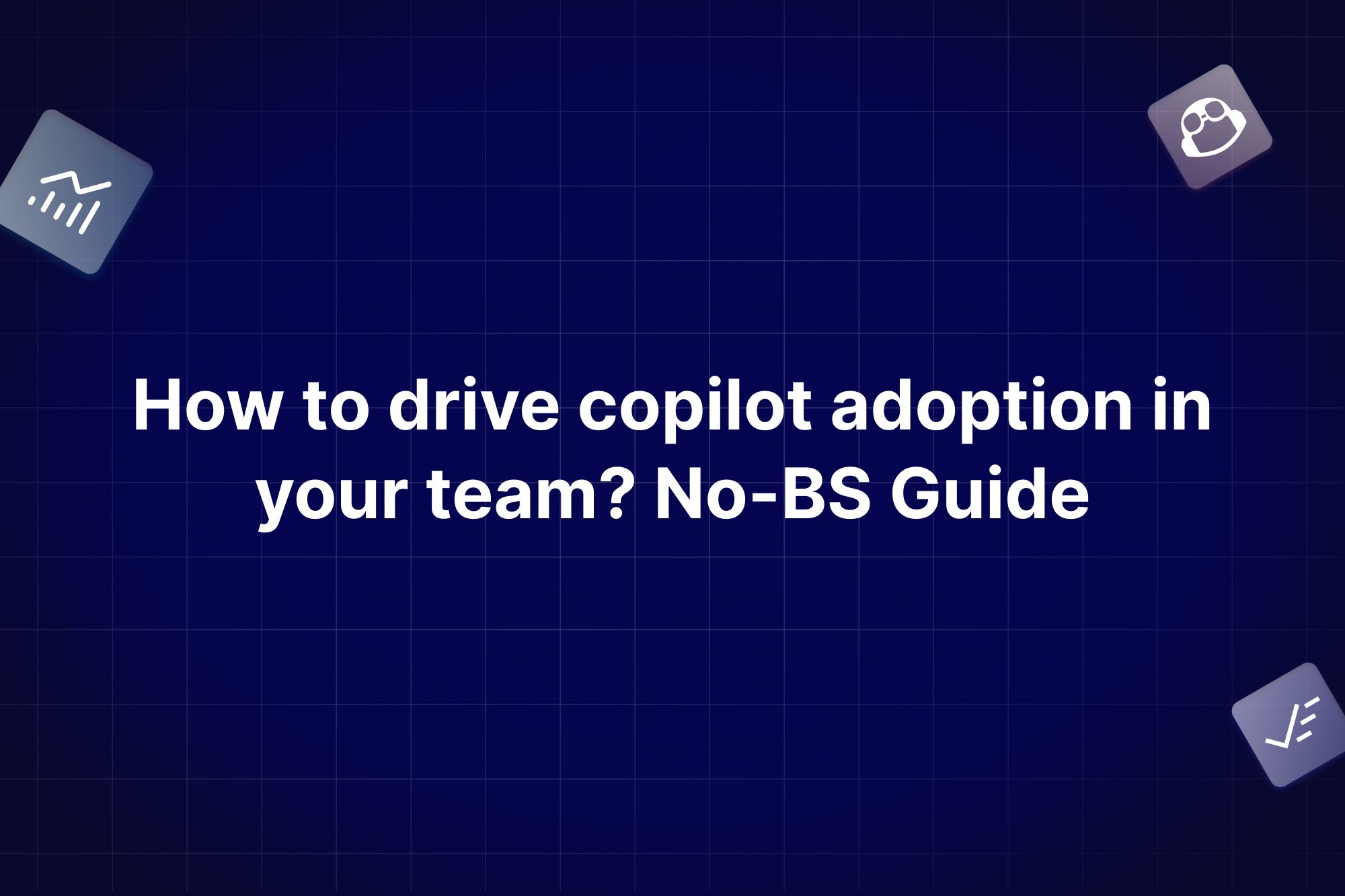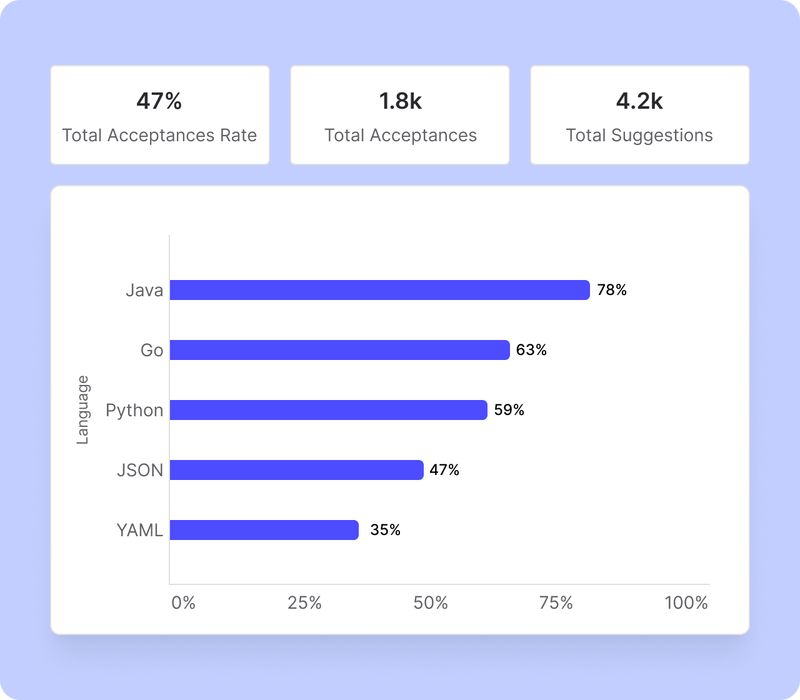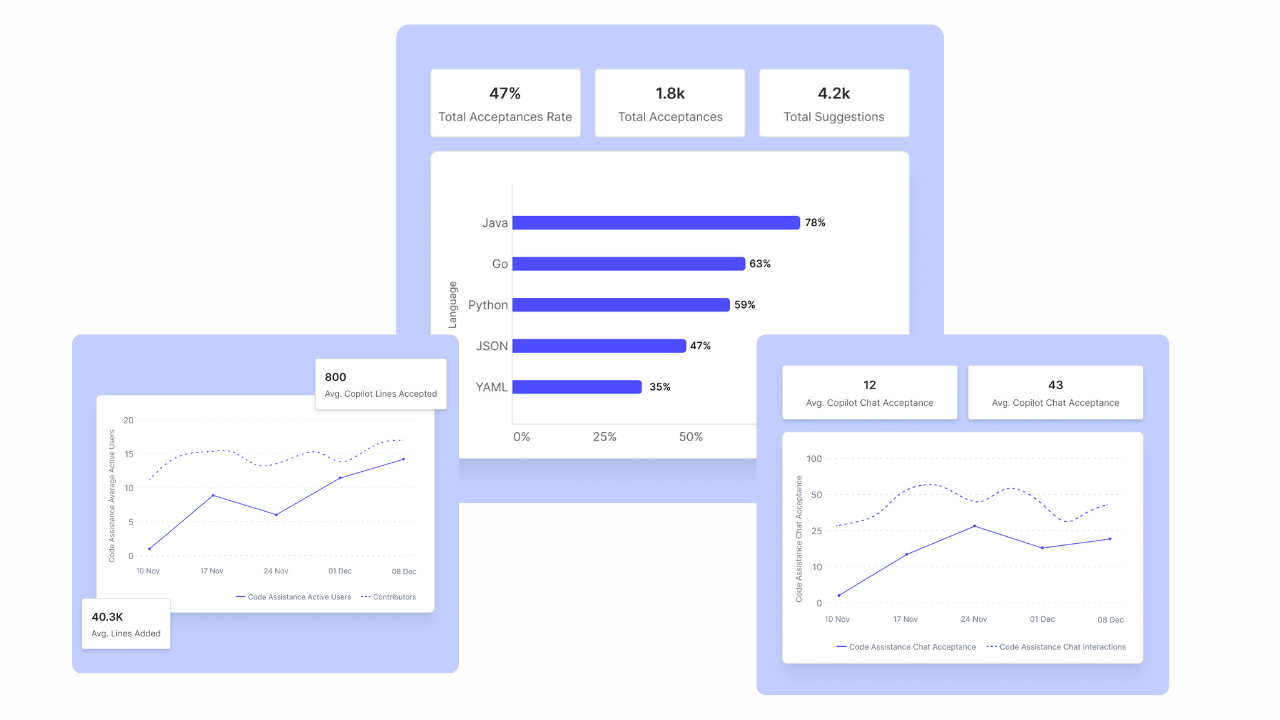How to drive copilot adoption in your team? No-BS Guide

GitHub Copilot is marketed as the ultimate sidekick for developers, a productivity boost, a creativity enhancer, a repetitive task killer. But let’s face it, the adoption story hasn’t been as loud as the hype. Why? If we dig into discussions like this Reddit thread, the picture becomes clear: Copilot adoption faces real-world challenges, not just technical but psychological, cultural, and workflow-based.
Here’s an actionable, no-BS guide to increasing Copilot adoption based on real insights from developers and teams.
1. Developers are skeptical, and trust is at an all-time low.
Developers aren’t rushing to embrace Copilot, and for good reason:

- Perceived Value Gap: Many feel Copilot is a gimmick rather than a tool they can rely on for meaningful productivity gains. As one commenter put it, "I can write it faster than prompting Copilot repeatedly.”
- Trust Issues: Teams are wary of poor suggestions. Low-quality completions waste time and create friction, leading to developers turning it off entirely.
- Misaligned Use Cases: Copilot doesn’t always align with workflows. As another commenter noted, "I need something to save me time on actual content, not just random made-up code.”
What You Can Do:
- Action 1: Run a Proof-of-Value Experiment: Create a real-world benchmark project where Copilot is applied to common tasks (e.g., boilerplate code, test writing). Compare time saved and quality improvements with manual efforts. This hands-on evidence can shift perceptions.
- Action 2: Start Small: Roll out Copilot to one team or project first. Gather data, refine processes, and share those wins to build trust across the org.
2. Poor setups and laggy tools are driving frustration.
Copilot works well but only in high-performance environments. Poor hardware or misaligned setups (like VSCode running slow on legacy systems) frustrate developers. As someone mentioned, “Microsoft’s products require high-end machines, but many devs are on older setups, which makes Copilot laggy.”

What You Can Do:
- Action 1: Optimize Development Environments: Audit your team’s hardware and IDE configurations. For older setups, consider upgrading key machines or offering remote cloud-based environments that run Copilot seamlessly.
- Action 2: Automate Setup: Build scripts or one-click installers that integrate Copilot directly into your team’s IDEs with pre-configured settings tailored to your workflows. No one should have to Google “how to enable Copilot” during onboarding.
3. It’s not just a tool; it’s a mindset shift your team needs.
The common pitfall: rolling out Copilot as the new “cool feature” without tying it into daily workflows. Developers don’t want a tool they have to consciously “remember” to use- it needs to blend seamlessly.
What You Can Do:
- Action 1: Define Where Copilot Shines: Copilot isn’t for everything. Focus adoption on areas where it truly excels: repetitive tasks, boilerplate generation, or even kickstarting creative coding. Document these use cases in simple guides.
- Action 2: Track and Improve Prompts: Prompts make or break Copilot’s usefulness. Create a shared library of effective prompts for your team’s most common tasks. If developers see good results early on, they’ll stick with it.
4. Start small: Show, don’t tell, why Copilot matters.
Skepticism can’t be eliminated overnight. Building a culture where developers are encouraged to try, fail, and refine their approach with Copilot is key.
What You Can Do:
- Action 1: Appoint Champions: Identify team members who see potential in Copilot and empower them to lead by example. Let them run weekly “Copilot Jam Sessions,” where they showcase how they use it effectively.
- Action 2: Showcase Wins in Standups: Publicize stories of how Copilot helped save time or improved productivity. Did someone write unit tests 3x faster? Celebrate it and let others see the value in action.
5. Solve the “Vanity Metrics” Problem
One of the biggest frustrations for managers is knowing whether Copilot is delivering actual value. Lines of code generated mean nothing if they don’t translate to better code, faster delivery, or fewer bugs.

What You Can Do:
- Action 1: Track Meaningful Metrics:
- PR Cycle Time: Is Copilot helping close pull requests faster?
- Acceptance Rate: Are developers accepting Copilot’s suggestions, or rejecting most of them?
- Rework Time: Is the AI reducing the time spent on redundant fixes or boilerplate code?
- Action 2: Use Analytics Tools: Use DevDynamics to visualize how Copilot is impacting team productivity. Identify who’s adopting it effectively and where additional enablement is needed.
6. Overcome Organizational Resistance
For larger enterprises, tool adoption often stalls due to bureaucratic inertia. As one commenter noted, “Enterprises are stuck in outdated hardware or reluctant to try new tools.”

What You Can Do:
- Action 1: Build a Business Case: Present a clear ROI for adopting Copilot. How much time could be saved on repetitive tasks? How does that translate to dollars saved in engineering costs?
- Action 2: Pilot with Low-Risk Teams: Start with less critical teams or projects to prove Copilot’s value in a controlled environment. Once successful, scale adoption gradually.
7. Tackle Skepticism with Hard Data
A major hurdle is skepticism about Copilot’s actual usefulness. One Reddit commenter noted, “I use it, but I prefer ChatGPT for anything Copilot.” The comparison to other tools highlights a clear gap in perceived value.
What You Can Do:
- Action 1: Competitive Analysis Workshops: Host workshops comparing Copilot with alternatives (like ChatGPT or even manual coding). Highlight areas where Copilot shines and where it needs adjustments.
- Action 2: Transparent Reporting: Share before-and-after case studies showing Copilot’s impact on real projects. Did it reduce test writing time? Improve deployment frequency? Let the numbers do the convincing.
Adoption doesnt happen overnight
Adopting GitHub Copilot isn’t just about handing out licenses and hoping for the best, it’s about deeply integrating the tool into your team’s culture, workflows, and mindset. By addressing technical barriers, showcasing real-world wins, and fostering a culture of experimentation, you can turn skeptics into advocates.
Above all, focus on real outcomes, not vanity metrics. Track how Copilot changes the speed, quality, and efficiency of your team’s work. And don’t be afraid to iterate. Adoption isn’t a one-and-done process; it’s a journey of trial, adjustment, and gradual trust-building.
When done right, Copilot can evolve from being "just another tool" to a trusted partner in your developers' workflow.


